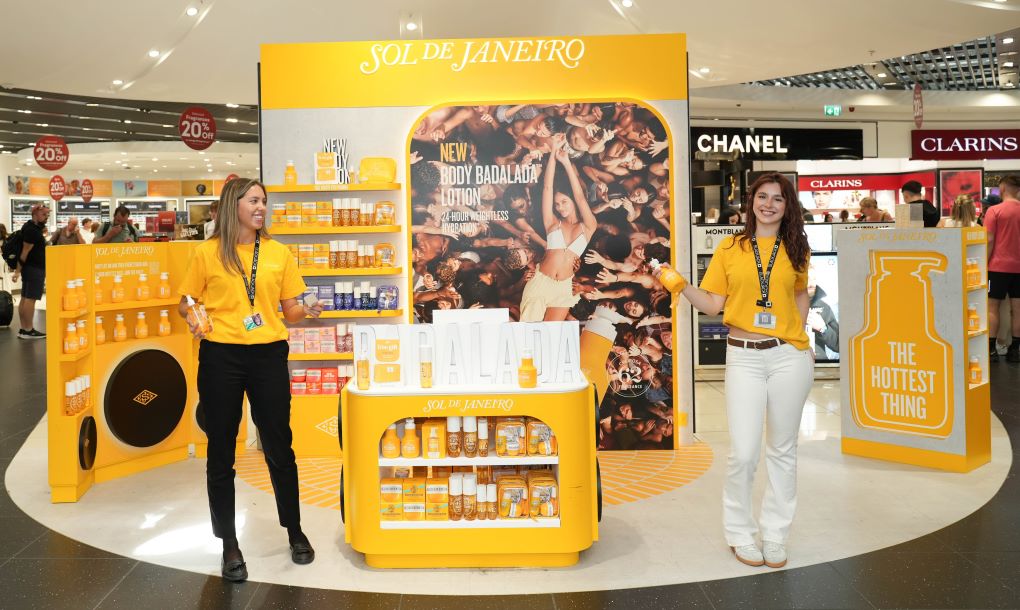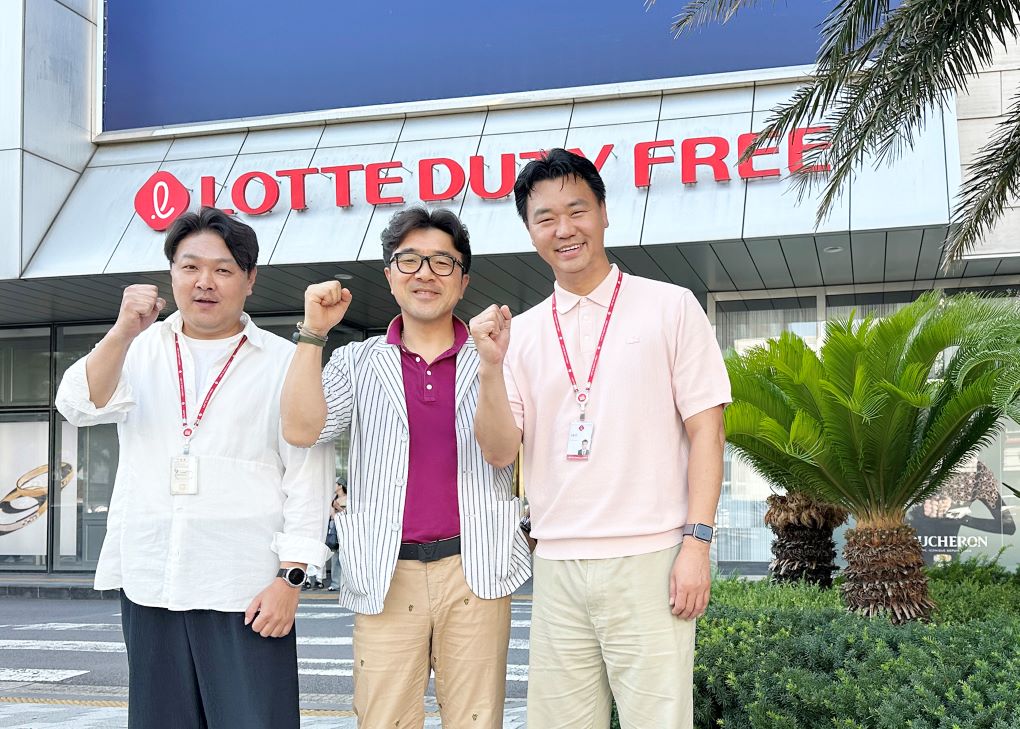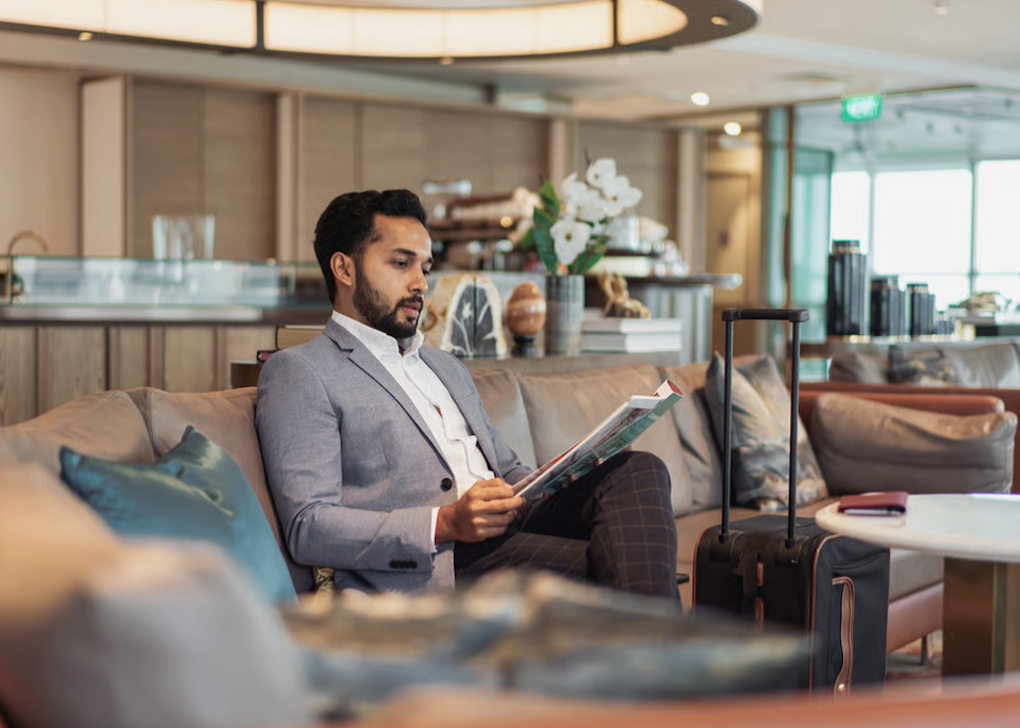INTERNATIONAL. The outlook for the US$2 billion cruise retail sector is stronger than it has ever been, as new ships and many new and upgraded shopping areas come on-stream. That was the upbeat message at a special session on Wednesday devoted to retail at Seatrade Cruise Global, the premier annual gathering of the cruise industry worldwide.
As reported, Seatrade partnered with The Moodie Davitt Report to host the session during its 2023 event at the Broward County Convention Center in Fort Lauderdale, USA.
Speakers included Carnival Cruise Line Vice President Guest Commerce & Onboard Revenue Luis Terife, Starboard President & CEO Lisa Bauer and Seth Weisser, CEO of fast-growing vintage luxury seller What Goes Around Comes Around. The session was chaired by The Moodie Davitt Report President Dermot Davitt.

Themes addressed by the panel included how cruiselines and their retail partners see the role of retail in the travel recovery phase, who the new cruise consumer is and what motivates them to shop onboard, and how the assortment should be adapted to their evolving needs. Key consumer drivers such as sustainability and digitalisation featured high on the agenda.
Opening the session, Davitt said: “This sector within the cruise business plays such a vital role in terms of the guest experience and in terms of revenue generation. We aim to reflect the growing importance of retailing to cruiselines – with retail becoming more and more integrated into the wider experience.”
Addressing the role of retail before the discussion began, Seatrade Retail Ambassador Nadine Heubel (who is also Newmark Senior Managing Director Travel Retail North America & Global Wholesale) said: “Average passenger numbers on ships have been constantly increasing, spaces dedicated to retail have been increasing as well and so have guest expectations towards the retail offer. While maybe even only ten years ago, guests could be satisfied and revenue maximised with great promotional deals only, in today’s world this is far from enough.
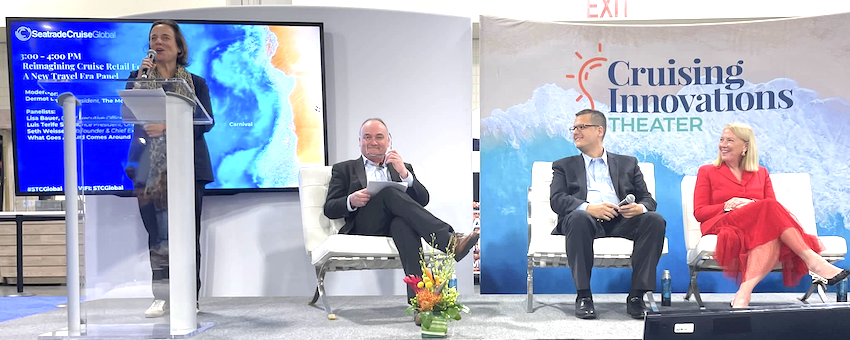
“The cruise ships of today outdo each other with amazing entertainment options, fabulous specialty dining options featuring celebrity chefs, and the latest in-cabin technologies. To continue being relevant for the cruise guest, retail has to keep up with these developments.
“The more space retail occupies on a cruise ship and the higher our share of onboard revenue will be, the more the satisfaction with the retail offer will influence the overall net promoter score of the cruise guest – a KPI which is so important to the cruise line industry.
“To achieve ultimate guest satisfaction, no party of the value chain can do it alone. If we want the guest to win, all in the industry ‘Trinity’ have to win – cruiselines, retailers and vendors.”
Assessing where the industry is on the path to recovery, Luis Terife said: “Last year saw a strong recovery and this year is even stronger. 2023 should be even better than 2019, which was itself a high mark for us. We have more guests, we have seen significant engagement from guests onboard with the activities, promotions and products that we sell, and we are seeing double-digit sales growth on a per passenger basis compared to 2019. With that willingness to buy, willingness to engage in the experience we couldn’t be happier.”
[The upbeat view mirrored the latest forecasts for cruise released on Tuesday at Seatrade. According to the latest forecasts from Cruise Lines International Association (CLIA), passenger volumes could reach as high as 33 million this year, based on strong bookings to date as the sector rebounds. In 2019, passenger numbers were 29.7 million.]

Terife also said that supply chain challenges for the retail sector had been improving.
“We had significant out of stock challenges last year and some categories are still challenging, but each month it has got better. We have found ways with the partners to find the products that we need to sell onboard. We need to make sure that the products are the right products, and that they get there in time for loading. What we have seen over the past three to four months is that we are now getting the right products, through the brands and our concession partners.”
On the new cruise guest, Terife added: “People today want experience, location, convenience and they want premium spaces. With all of our new ship classes we are adding spaces that live up those expectations – so we can add immerse them into the experience of the brands that we offer onboard.”
As reported, Starboard has revealed a refreshed brand identity under the banner, ‘Curate a Vibrant World’ (see video below).
Addressing the thinking behind the brand update, Lisa Bauer said: “During COVID, our leadership teams spent quite a bit of time working on our ‘North Star’, and where we landed was around the idea of how you curate and bring together a great guest experience, one that is very different by cruiseline brand. The work released in the last couple of weeks is a natural extension of that with its vibrant colouring and using the sunburst as our icon. This is really about bringing our ‘North Star’ to life for our employees, for our guests and for our vendors.”
Importantly, the rebrand chimes with the optimism that Starboard sees ahead for the cruise sector.
Bauer added: “This industry is so resilient and has had to be through many challenges. But I don’t want our people to look back to 2019. Let’s look through the windshield, not the rearview mirror.
“Through 2027 we are forecasting as an industry a +45% increase in in guests, which is huge, with 75 new ships coming. So that should give us all a reason for optimism.”
Offering the brand perspective, Seth Weisser outlined the journey of What Goes Around Comes Around from a single vintage store in New York as early as 1993 to a fast-growing concept today.
“Pre-owned has become a buzzword for the consumer experience today. We were originally in brick and mortar stores, then worked with the traditional retailers, and in 2019 we began to speak to Lisa and Starboard about the idea of trying to test this in the cruise industry.
“It was out of the box but the response was amazing. I think that is because the consumer on the ships is looking for a differentiated experience. We offer the brands they always wanted but never expected to find on a cruise ship. Partially the allure of vintage is the hunt and the finding of something unexpected, and now you can do that onboard. The consumer has something they want to spend their money on, it works for the brands, and it has become a perfect marriage for us.”
On the consumer demographics to which What Goes Around Comes Around appeals, Weisser said: “It is very interesting. It ranges from the person buying their first bag, at under US$2,000, to a more advanced customer who has multiple pieces, or even going as far as the collector. This is where we work very closely with the team at Starboard to analyse the demographics, the demand on the ships, and then bring it back to make sure that we are covering all the bases. So each of those customers is expiring, excited about the experience.”

On the appetite to purchase today and the keys to unlocking further growth, Terife said: “It is about product, location and experience. As long as you create the right value proposition and value equation, people will buy.
“This is about what you are offering, how you activate it – critical as on a cruise shop you have an eco-system of activations each week – how you engage with the guests and also how the team is actually bringing the product and the brand into the experience.”
On the consumer appetite to spend, Bauer added: “We took a step back here and said, not everyone will want to buy a US$5,000 bag but equally not everyone wants a ‘two for US$20’ t-shirt.
“We crafted a strategy across each category and each cruiseline partner that was really around good, better, best. That means fulfilling demand for entry level to aspirational, rather than focusing on product and category.
“We really tried to look through the eyes of the consumer. In terms of trends, one is certainly leaning into the cruiselines loyalty programme, and reinventing logoed merchandise. Logo is something that the guests wear as badges of honour that represent the loyalty they have to our great cruise partners. We have really doubled down on that and seen tremendous growth in that category.
“I would also say destination is important. People want to take home memories, which leads into itinerary gifts, and mementos of where they are sailing. Sustainability is also something that is very, very important to guests. We are seeing those categories have a strong place where the guest is leaning in. And the more you up your game here, the more they are willing to spend.”
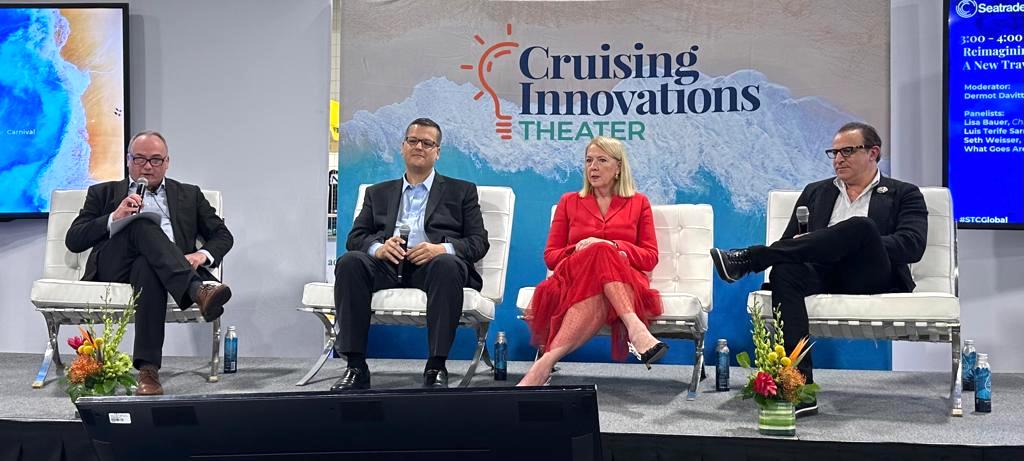
The panellists also discussed the sustainability journey that cruiselines and their partners are, on and what that means for retail.
Lisa Bauer said: “We have developed some great partnerships, for example introducing luxury vintage with Seth, or with some of those jewellery manufacturers who are taking plastic out of the oceans. That also extends to the search for diversity with our partners, for example female-led businesses. When we choose product one of the filters we run everything through is sustainability.
“When we launched on Carnival Celebration we did it without any plastic bags and encouraged guests to buy reusable bags. Sustainability has a seat at the table every time we are curating products.”
Terife added that Carnival has been building momentum around sustainable practices for years. “We have not had single-use plastic since 2018. We also talk about the materials and how we source, and my team is doing a great job on this on the shoreside retail. We need a clear story. Sustainability is key in every aspect of our ecosystem. And we want to be clear that retail is at the forefront of the way that we sell from products to the use of materials.
With vintage luxury a recycled product sector, Weisser said that his company and category was akin to a “poster child” for sustainable practices.
The speakers also addressed how they see the future for store formats and the key product categories of today and those that might emerge tomorrow.
Bauer said: “I’m particularly excited about the idea of pop-ups and pop-ins, and the ability to test and learn. If it works, scale it and if it doesn’t, get it off. It’s part of changing the mindset around, not saying I’m going to have a marketplace, and have all this product, but instead putting it through the lens of the consumer. So if you are going to do a pop-up, why not do it about beach essentials, or do it around a night out, or gifting, or leaning into the destination. Then you are thinking about it through the eyes of the consumer, versus just putting on an event. So the idea of pop-ups is important.
“With logo, we have just scratched the surface. We just hired some more in-house development to expand in that area. As we have talked about, sustainable products are really growing and destination is also key. All of those alongside the evergreen categories that we carry and will continue to develop.”

On how retail more broadly will be integrated into the wider onboard experience, Terife highlighted three elements.
“One is that how you bring the retail closer to the point of sale. So on our shore excursions desk, at our photo lab or on our pre-cruise website, make sure retail is always there.
“Then there is a digital component in how we are showcasing the products onboard, and how we can provide experiences from the digital signage to the website to the app. Internet onboard is much enhanced now so how can we translate that to more digital experiences as you are sailing with us?
“And then finally, activations are not only about retail, they are part of an ecosystem. We have a great partnership with [Starboard sister company] Onboard Media for our port shopping programme. How do we being that connection between the port and onboard store? I see a world where retail is integrated with all elements of the guest experience throughout their stay.”
*More on this Seatrade retail session will follow across our platforms soon. ✈


